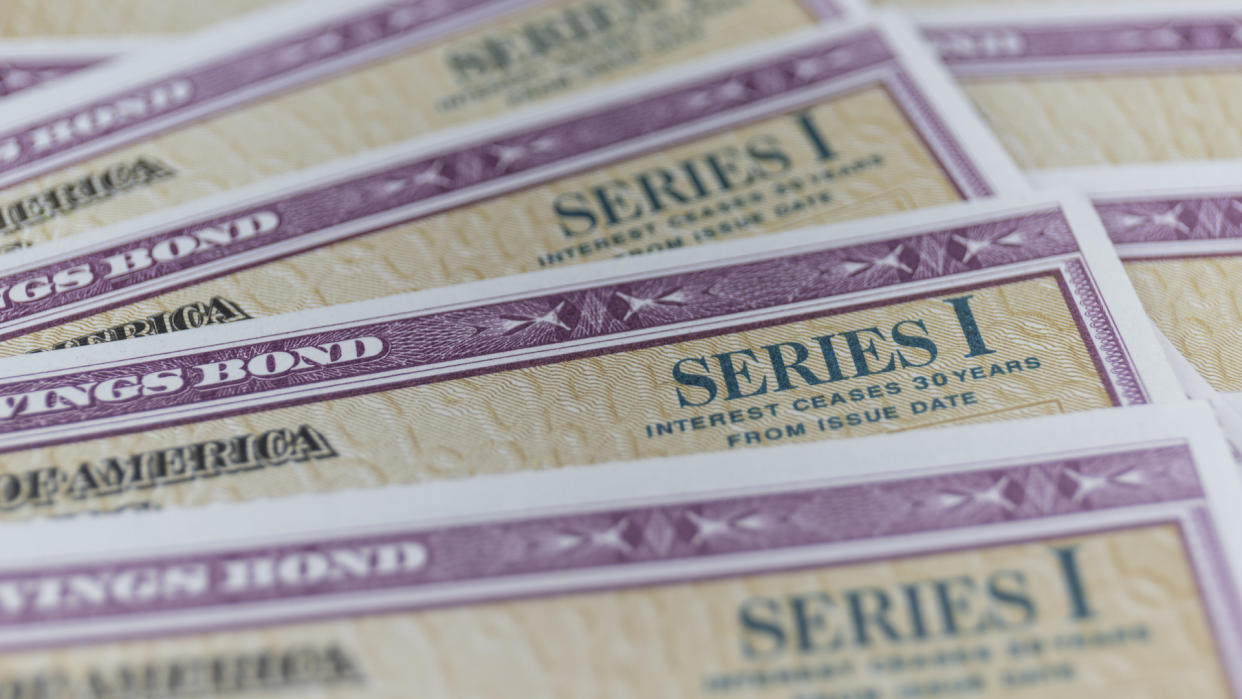How To Buy I Bonds: A Step-by-Step Guide

Series I savings bonds, or I bonds, are issued by the Treasury Department and offer a way for people to save money that is protected from inflation. This helps protect the purchasing power of your original investment. Since they’re backed by the U.S. government, I bonds are considered one of the lowest-risk investments. Keep reading to learn more about I bonds and how to purchase them.
Read: 3 Things You Must Do When Your Savings Reach $50,000
How To Buy I Bonds
If you are interested in buying I bonds, you can follow these eight easy steps:
Go to the official TreasuryDirect website.
In the Log In box, select “Open a New Account.”
Apply for a TreasuryDirect account by providing some personal information, including your Social Security number and bank information.
Once your application is approved, log in to your account.
On your account dashboard, click the “BuyDirect” tab near the top of the page.
Choose “Series I” under the Savings Bonds section.
Follow the prompts to purchase up to $10,000 in I bonds.
Submit payment to complete the purchase.
What Is the Best Way To Buy I Bonds?
The only way to buy electronic I bonds is directly through the U.S. Treasury Department as you cannot buy them through a bank. To purchase them online, you can follow the steps outlined above. Keep in mind that you can purchase up to $10,000 worth of electronic I bonds per year.
If you would prefer to purchase paper I bonds, the only way to do so is to use your IRS tax refund. You need to fill out IRS Form 8888 to specify how much of your refund should go towards purchasing I bonds and how much should go directly to your bank account.
There’s a lower limit when it comes to buying paper bonds. Each person can only buy a maximum of $5,000 in paper I bonds with their tax return.
An I bond can earn interest for up to 30 years unless you cash out before this period ends. They earn interest through a combination of two different interest rates, which together make up an overall “composite” rate.
These rates are announced semi-annually, on the first business days of May and November. As of Feb. 24, 2023, the composite rate is set at 6.89% for I bonds issued between Nov. 1, 2022, and April 30, 2023.
What Is the Downside of an I Bond?
One downside of I bonds is that the interest rate can fluctuate and decrease over time if inflation also decreases. This can lower the total amount of earnings over the lifespan of the bond.
Furthermore, there is a cap on the amount of I bonds an individual can purchase. Each year, one person can only buy $10,000 in electronic I bonds and $5,000 in paper bonds. In total, this amounts to $15,000 worth of I bonds for each person per year.
Another downside is the fact that they can’t be cashed out within one year of purchase. This may present challenges in the case of financial emergencies.
Do You Have To Pay Taxes on I Bonds?
You’ll have to pay federal income tax on any interest earned through an I bond. Depending on how you obtained the I bond, you may also have to pay additional taxes such as federal estate, gift or inheritance taxes.
Final Take
I bonds have returned to the mainstream conversation recently with the increase in inflation rates. Since they’re backed by the U.S. government, they’re considered to be one of the lowest-risk investments and can be a solid addition to a diverse portfolio. If you’re looking for a stable principal rate and protection from inflation, I bonds are a good option.
FAQ
Here are the answers to some of the most frequently asked questions regarding I bonds.
Can you purchase an I bond through your bank?
No, you cannot purchase I bonds through your bank. The only options to purchase them would be directly through the U.S. Treasury Department or by using a portion of your IRS tax refund to get paper I bonds.
How much does a $100 I bond cost?
There are no additional fees when it comes to I bonds, so a $100 I bond would cost $100.
Information is accurate as of Feb. 24, 2023.
This article originally appeared on GOBankingRates.com: How To Buy I Bonds: A Step-by-Step Guide
